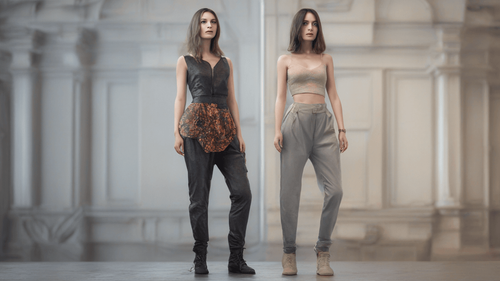
Introduction
In the realm of digital creativity, the convergence of artificial intelligence (AI) and image generation has birthed a fascinating synergy. Harnessing the capabilities of Python, a versatile and powerful programming language, opens up a world of possibilities for crafting stunning visuals that were once the realm of human artists. In this article, we delve into the exciting domain of AI image generation with Python, exploring techniques, tools, libraries, and creative potential.
The Power of AI in Image Generation
The concept of AI has transcended its sci-fi origins to become a transformative force in various industries. Leveraging its cognitive abilities, AI can now replicate the human artistic process, enabling the generation of awe-inspiring images that captivate and inspire. The fusion of AI and Python propels this potential even further, granting us the ability to orchestrate intricate visual symphonies.
Unveiling AI Image Generation with Python
Understanding AI Image Generation
AI image generation involves the use of algorithms that enable computers to create images autonomously. This process combines neural networks, deep learning, and pattern recognition to produce visuals that can range from abstract compositions to photorealistic landscapes.
AI Image Generation Techniques
-
Generative Adversarial Networks (GANs): GANs are a cornerstone of AI image generation. They consist of two neural networks, the generator, and the discriminator, engaged in a creative tug-of-war. The generator crafts images while the discriminator evaluates their authenticity, leading to a constant refinement of output.
-
Variational Autoencoders (VAEs): VAEs introduce a probabilistic twist. They learn latent variables that represent various features of an image. By manipulating these variables, new images can be generated, enabling controlled creativity.
Libraries for AI Image Generation in Python
Python offers a plethora of libraries that simplify AI-driven image generation:
-
TensorFlow: A robust framework for building and training AI models, including image generators.
-
Keras: A high-level neural networks API that works seamlessly with TensorFlow, expediting model development.
-
PyTorch: Known for its dynamic computation graph, PyTorch is highly adaptable and popular for image generation tasks.
-
GPT-3 Python: OpenAI's GPT-3 model, with Python integration, has shown remarkable image generation capabilities, pushing the boundaries of AI creativity.
Getting Started with AI Image Generation in Python
Setting Up Your Environment
Before diving into the world of AI image generation, ensure you have Python and the required libraries installed. Create a virtual environment to manage dependencies effectively.
Creating Your First AI-Generated Image
Let's embark on a hands-on journey:
-
Import the necessary libraries: Use
importstatements to bring in TensorFlow, Keras, or PyTorch, depending on your preference. -
Preprocess your data: Prepare your dataset to feed into the AI model. This could be a collection of existing images or a dataset you curate.
-
Build and train your model: Construct your AI image generation model using GANs, VAEs, or other architectures. Train it on your prepared dataset.
-
Generate images: Utilize the trained model to generate images. Fine-tune the model's parameters to achieve desired creative outcomes.
AI Image Generator Python: FAQs
How Does AI Generate Realistic Images?
AI generates realistic images through deep learning techniques that analyze patterns, textures, and structures in existing images. It learns to replicate these elements to create new, coherent visuals.
Can AI-Generated Art Rival Human-Created Art?
AI-generated art has made significant strides, producing captivating pieces. While it can evoke emotions and intrigue, the unique human touch and intent in art remain unparalleled.
What Role Does Python Play in AI Image Generation?
Python provides a conducive environment for AI image generation due to its extensive libraries, frameworks, and community support. Its syntax is intuitive, enabling efficient experimentation.
Is AI Image Generation Limited to Visual Art?
No, AI image generation extends beyond visual art. It can generate music, literature, and even assist in scientific research, demonstrating its versatile applications.
How Can I Ethically Use AI-Generated Images?
Respect copyright and ethical guidelines when using AI-generated images. Be transparent about the image's origin if required and support artists who use AI as a tool.
What's the Future of AI Image Generation?
The future holds exciting possibilities for AI image generation. As AI algorithms evolve, we can anticipate even more lifelike and creative outputs, revolutionizing digital artistry.
Conclusion
In the mesmerizing realm of AI image generation with Python, creativity transcends human imagination. The convergence of AI's cognitive prowess and Python's programming elegance empowers us to craft images that redefine artistic boundaries. From GANs to VAEs, TensorFlow to PyTorch, the tools and techniques at our disposal are a testament to the endless innovation that AI image generation promises. As we navigate this digital canvas, let's remember that while AI lends us its brilliance, it is ultimately the human spirit that breathes life into each stroke of pixelated genius. So, wield the power of AI, let your creativity flow, and paint the future with pixels of imagination.